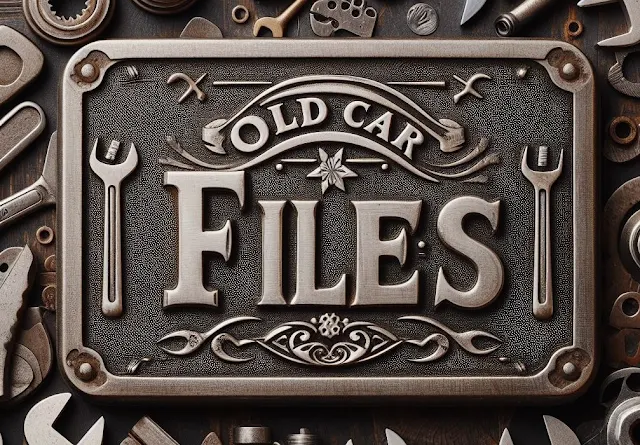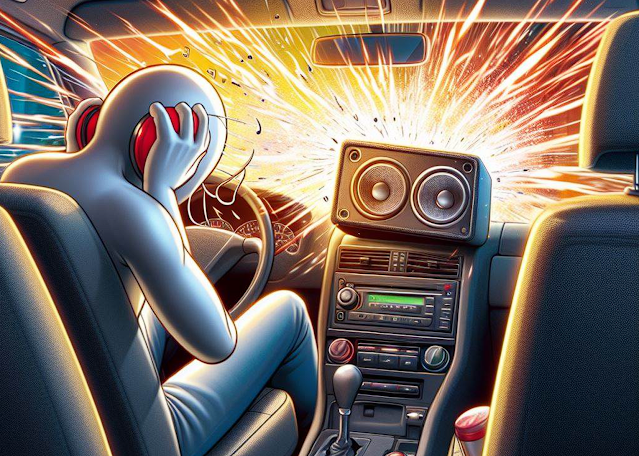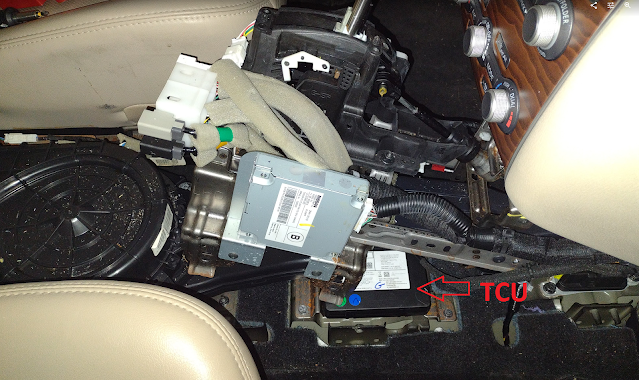The Old Car Files: Pathfinder Infotainment Problems, Part 1
I guess I need to modify my definition of "old car" to be more inclusive so I can blog about life with my 2018 Nissan Pathfinder and avoiding ridiculous dealer charges when something goes wrong. To me, a 6-year-old car doesn't seem very old, so henceforth "old car" shall refer to any vehicle I own that is out of warranty. That ought to cover it.
You may recall from my car shopping posts that Android Auto was a feature I really wanted in my next car, primarily for using google maps on road trips and being able to run it from the infotainment screen rather than have to mount my phone somewhere and operate it off of the small phone screen. Nissan did not include Android Auto in the 2018 Pathfinder. Maybe this was for the best, as most Android Auto systems deployed in that timeframe used wired connectivity only and did not support wireless, and I really wanted wireless Android Auto support so I wouldn't even have to take my phone out of my pocket when I got in the car.
Before committing to the expense of adding aftermarket Android Auto to the car, I decided to get used to the built-in system with generic Bluetooth audio connectivity. This system worked so-so for playing podcasts from my phone on my commute. It could auto start playing where it left off, but annoyingly would keep auto starting in the middle of a drive even when I manually stopped the playback. To stop this, I had to either select another source to listen to, like the radio, or turn the stereo off. With the stereo off, you can't hear driving directions, though. This setup is not ideal when you are driving a carload of scouts on a trip and the last podcast you were listening to had language and content that may not be appropriate for young ears. Additionally, there is no independent volume control for the various sources of audio. I have all of the audio settings on my phone cranked all the way up for this BT connection and I still have to turn the car stereo way up to get it to a useful volume. Then when I change back to the radio, I get blasted with super-loud music until I can turn it down. I'm flabbergasted that a major car company with years of experience building cars has put so little effort into making a useful infotainment system. Are my needs and desires, once again, not representative of the mainstream? 😡
The built-in navigation in the Pathfinder was probably pretty standard for the era it was from. Maybe even better than average as it can pull RDS traffic data and use it for route planning. It pales in comparison to the usefulness of Google Maps, however. Entering locations was really cumbersome and most of the functions are locked out if you are moving and require you to use voice commands. I kept trying to use the voice commands, but the car never responded. After a bit of playing around, I decided the microphone in the car wasn't working. I confirmed this by trying a phone call from the car over the BT connection. I could hear the person on the other end, but they couldn't hear me. Searching the Interwebs turned up an NTSB service bulletin for the 2018 Pathfinder that indicated some cars could have their microphones stop working and that could be resolved by downloading new firmware to the Telematics Control Unit (TCU). I called up my local Nissan dealer and they explained that because this was a service bulletin and not a recall and my warranty was up, I would have to pay for this fix. They charge a $189 diagnostic fee just to take a look. #$%&ing Nissan! 😡😲😱😭
I was stuck- I really needed the microphone to work. So, I set up an appointment to have them run the diagnostics. (Stay with me here- this section will be interesting to other Pathfinder owners experiencing the same problem, but maybe there is some general interest in learning the details of how I beat the greedy car company and the greedy dealers) The dealer came back and said the error codes indicated the TCU had a problem and would need to be replaced at a parts and labor cost of ~$1100 ($600 for the TCU and $500 for labor and programming). So, $189 for them to hook up a scanner and run 5 minutes of diagnostics. I told them to hold off on the replacement and picked the car up. I reached out to the dealer that sold me the car as it was still within the 30 days of buying it, and they, of course, said that since this isn't a safety issue on the car, they don't warrant it under the state's lemon law. Back to the interwebs. It turns out, there is very little DIY information on the Pathfinder. Far less than the Element, Prius or Miata. I couldn't even find out where the TCU lives in the car! Nissan has even stopped publishing service manuals for these cars. If I want the manual, I have to buy a subscription to it online. #$%&ing Nissan! 😡😲😱😭 At least they offer a one-day subscription, but still if you use that 3 or 4 times, it costs as much as what a hard copy of a shop manual would cost to buy that you could use forever. So, I paid for a day of manual use and learned everything I could about the TCU, how to get it, how to replace it and so on, and took screenshots of all the important stuff.
I found Waldo hiding under the shifter in the center tunnel:
It turns out the manual was not all that helpful. It offered little information and was incomplete. Shame on you Nissan for charging big $ for such a crappy product! For example, it made no mention of, and didn't even show in diagrams, two hidden bolts on the transmission tunnel that needed to be removed before you could get it out of the car. I probably spent an hour trying to figure out why I couldn't get it out. The manual also said that a TCU must be replaced with a brand new unit, has to be programmed with the car VIN number and has to have the keys programmed to it. Moving a used TCU from another car can't be done (so they say). I suspected the issue was their diagnostic software doesn't have the ability to erase the EEPROM that stores the VIN and key codes. This is a function of lazy software development and not wanting to include an additional command in their API to the OBD programmer. There's no good excuse for not having an EEPROM erase routine available. I found online videos of others working around this problem on other cars' ECUs by using a clip-on EEPROM programmer to do the erasing and make the chip look like new. I've used this type of hardware in my career as an electrical engineer and figured in a worst-case scenario, I could spend a hundred bucks on hardware needed to do this. As for the programming, Nissan also offered a subscription to their software and included a Right 2 Repair version with a daily subscription option. This was somewhat affordable, compared to the $10K hardware/software bundle that a dealer would need to do this, but still annoying. A little more research turned up a $500 pass-through OBDII programmer compatible with Nissan's Consult III software that I think would allow me to do the programming myself. Worst case, I figured I was looking at $500 for a programmer, $100 for EEPROM adapter and programmer and $100 for a used TCU to attempt to fix this myself. This would still come out ahead of the dealer charges. In the best case scenario, I would only need to spend ~$100 for a used TCU.
After I pulled my center console apart to verify I could actually get at and remove the TCU, I ordered a used one. I actually got a better deal on a used TCU by getting one out of an Infinity (same electronics as the Pathfinder, just a different mounting bracket). $86 on E-bay. I was a little worried that when I installed it, I wouldn't be able to do anything with the car, like start it and lock or unlock it if the keys weren't programmed to the new TCU. It turned out, that wasn't necessary at all. The TCU contains the cellular connection that is used for Nissan's connect services that give them remote telematics and their version of OnStar services for emergency help and assistance stuff (assuming you subscribe to it for a monthly fee). The VIN number programming and key programming in the TCU must only be used for those remote cellular services and aren't the primary storage location for normal car operation. Since I have no intention of ever subscribing to the Nissan Connect service, if those functions don't work, I will never even notice. Surprisingly, everything else still worked with the swapped TCU with NO REPROGAMMING NECESSARY. And the microphone was fixed. Thus, I spent $86 for this fix instead of the $1100 the dealer wanted to charge me. I'm still a little torqued that I wasted $189 on diagnostics. I have since posted my findings on the Pathfinder forums I frequent so that hopefully others with this problem can resolve it themselves rather than fund the corporate greed that tries to mandate you buy new parts rather than re-use stuff salvaged from other cars.
In the next installment, I will cover my aftermarket Android Auto installation and the good and bad I have learned about it over the past few weeks.







Comments
Post a Comment